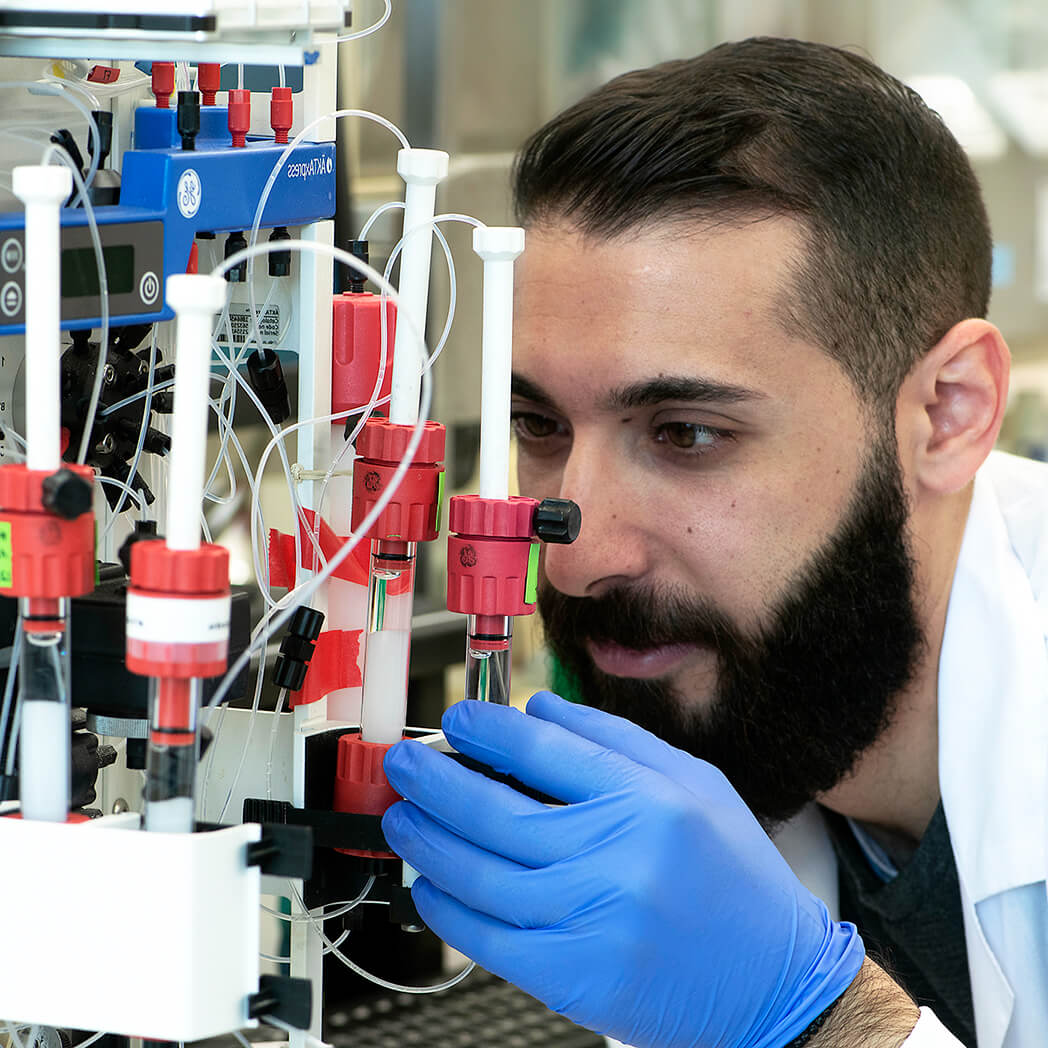Overview
- Peptide (C)KYLYEDEG(S)WTRNS, corresponding to amino acid residues 288-301 of rat GLP1R (Accession P32301). 2nd extracellular loop.

 Cell surface detection of Glucagon-like peptide 1 receptor by direct flow cytometry in live intact mouse J774 macrophage cells:___ Cells.
Cell surface detection of Glucagon-like peptide 1 receptor by direct flow cytometry in live intact mouse J774 macrophage cells:___ Cells.
___ Cells + Rabbit IgG isotype control-PE (#RIC-001-PE).
___ Cells + Anti-GLP1R (extracellular)-PE Antibody (#AGR-021-PE), (2.5µg). Cell surface detection of Glucagon-like peptide 1 receptor by direct flow cytometry in live intact human THP-1 monocytic leukemia cells:___ Cells.
Cell surface detection of Glucagon-like peptide 1 receptor by direct flow cytometry in live intact human THP-1 monocytic leukemia cells:___ Cells.
___ Cells + Rabbit IgG isotype control-PE (#RIC-001-PE).
___ Cells + Anti-GLP1R (extracellular)-PE Antibody (#AGR-021-PE), (5µg).
- Donath, M.Y. et al. (2003) J. Mol. Med. 81, 455.
- Buteau, J. (2008) Diabetes Metab. 34, S73.
- Holst, J.J. (2007) Physiol. Rev. 87, 1409.
- Harkavyi, A. and Whitton, P.S. (2010) Br. J. Pharmacol. 159, 495.
Glucagon-like peptide 1 (GLP-1) is a hormone secreted by the intestine following a meal1. This hormone is known to enhance the secretion of insulin, important glucose blood level regulation2,3. In pancreatic β-cells, other than stimulating insulin secretion, GLP-1 action is also important for β-cell mass expansion2.
GLP-1 exerts its biological functions through Glucagon-like peptide 1 receptor (GLP-1 receptor), a member of the G-protein coupled receptor superfamily. Like all members, this receptor spans the membrane seven times. GLP-1 receptor couples with Gs, thereby stimulating adenylate cyclase, consequently leading to an increase in cAMP2.
The receptor is expressed in various tissues, namely the pancreas, adipose tissue, muscle, heart, gastrointestinal tract and liver. GLP-1 receptor is also found in the central nervous system where it provides a neuroprotective effect4.
The glucagon-like peptide 1 system may serve as a therapeutic treatment in diabetes mellitus, in order to maintain β-cell mass expansion2. In addition, the receptor may serve as a therapy target in various neurodegenerative diseases like Alzheimer’s and Parkinson’s disease4.
Application key:
Species reactivity key:
Anti-GLP1R (extracellular) Antibody (#AGR-021) is a highly specific antibody directed against an epitope of the rat glucagon-like peptide 1 receptor. The antibody can be used in western blot, immunohistochemistry, immunocytochemistry, and live cell imaging applications. It has been designed to recognize GLP1R from human, rat, and mouse samples.
Anti-GLP1R (extracellular)-PE Antibody (#AGR-021-PE) is directly conjugated to R-Phycoerythrin (R-PE) fluorophore. This conjugated antibody has been developed to be used in immunofluorescent applications such as direct flow cytometry and live cell imaging.
